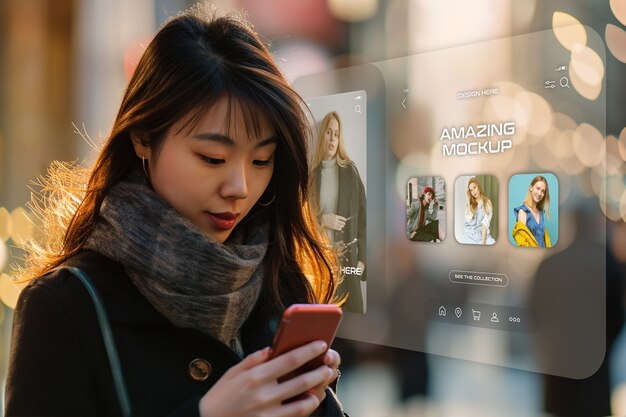As Australia’s multicultural landscape continues to grow, reaching the Chinese-speaking community through targeted media strategies has become increasingly valuable. Chinese media in Australia, including television, radio, print, digital platforms, and social media channels, provides an effective way to connect with Chinese Australians and Chinese-speaking visitors. For businesses and brands looking to reach this demographic, understanding the available channels and crafting culturally relevant content are essential steps to ensure successful engagement.
The Importance of Chinese Media in Australia
- Connecting with a Significant Population: Chinese Australians are one of Australia’s largest ethnic communities, contributing to the economy as residents, tourists, and business investors. Targeting this group effectively through Chinese media can help brands build trust and brand loyalty within this important demographic.
- Bridging Cultural Gaps: Chinese media platforms help bridge cultural and language differences, making it easier for brands to communicate authentically. This connection is particularly vital for services like banking, insurance, real estate, and education, which require a high level of trust.
- Increasing Brand Visibility and Awareness: For businesses new to the Chinese market, advertising in Chinese media helps build initial awareness. For established brands, it can reinforce trust and deepen engagement.
Major Chinese Media Platforms in Australia
Several Chinese-language media channels in Australia cater specifically to Chinese-speaking audiences. These platforms include traditional media like television and radio as well as digital and social media, creating multiple touchpoints for reaching Chinese audiences.
1. Chinese Television and Radio in Australia
- TVB Australia and Phoenix Chinese Channel are popular options for Chinese-language television, airing a mix of entertainment, news, and cultural content.
- SBS Mandarin Radio and 2CR Radio Network offer radio broadcasts in Mandarin and Cantonese, focusing on news, music, and community events.
- These channels are essential for reaching audiences who prefer traditional media or enjoy consuming news in their native language.
2. Chinese Print Media in Australia
- Newspapers like Australian Chinese Daily, Sing Tao Daily, and Australian Chinese Times publish Chinese-language news and information tailored for local readers.
- These publications often feature advertisements for Australian businesses catering to Chinese-speaking audiences, especially in areas such as real estate, healthcare, and education.
3. Digital Media and Websites
- WeChat and Weibo remain essential social media platforms among Chinese Australians. WeChat is widely used for social communication, business updates, and brand marketing.
- Chinese-specific websites and news platforms such as Sohu Australia and Sydney Today are well-read by the Chinese-speaking community for local and international news, lifestyle, and entertainment updates.
4. Social Media Marketing
- Platforms like Douyin (the Chinese version of TikTok), Xiaohongshu (Little Red Book), and Kuaishou are popular for video content and social sharing, especially among younger audiences.
- WeChat Moments, the platform’s version of a social feed, allows brands to reach users directly with localized, engaging content. Many businesses use WeChat Mini Programs to facilitate services like bookings, product purchases, and brand interactions in an accessible way.
Best Practices for Advertising in Chinese Media in Australia
- Use Culturally Relevant Messaging: Ensure that the messaging respects and reflects Chinese cultural values, particularly during key events like Lunar New Year, Mid-Autumn Festival, and National Day celebrations, when brand engagement is high.
- Localize Content for Chinese Australian Audiences: Tailor content to reflect local experiences and values, blending Australian and Chinese cultural elements to create relatable messages. Highlight connections to local communities to build a sense of trust and belonging.
- Leverage Influencers and KOLs: Partnering with Chinese Key Opinion Leaders (KOLs) who resonate with Chinese Australian audiences can amplify the impact of advertising campaigns. Popular influencers on platforms like Xiaohongshu and Douyin can boost brand credibility and appeal, particularly in areas like fashion, technology, and lifestyle.
- Utilize WeChat for Integrated Campaigns: WeChat’s ecosystem, which includes Moments ads, Mini Programs, and official brand accounts, is a powerful tool for brand engagement. It enables brands to create a seamless user experience, from ad exposure to purchase, all within the same platform.
- Incorporate Data-Driven Targeting: Using analytics and data insights can help tailor campaigns based on demographics, preferences, and user behaviors. Personalized ads on digital platforms improve relevance and engagement, helping brands achieve a better return on investment.
Key Industries Utilizing Chinese Media in Australia
Several industries have successfully used Chinese media advertising in Australia to reach their target audiences:
- Real Estate and Property Development: Many Chinese Australians invest in property, making real estate advertising a prime area for using Chinese media. Developers and real estate agencies often use WeChat, television, and print media to promote listings, property events, and investment opportunities.
- Education and Student Services: Australia attracts many Chinese students, making education-related advertising crucial. Schools, universities, and language institutions use WeChat and targeted digital ads to reach prospective students and their families.
- Banking and Financial Services: Chinese-speaking audiences are often interested in financial products, investment services, and mortgage options. Banks and financial institutions in Australia reach this audience through targeted advertising on Chinese-language news sites, WeChat, and radio.
- Travel and Hospitality: With China being a significant source of tourism, the travel industry targets Chinese tourists through WeChat ads, KOL collaborations, and partnerships with Chinese travel sites to promote accommodations, experiences, and destinations.
Case Studies: Successful Chinese Media Campaigns in Australia
- ANZ Bank on WeChat: ANZ has leveraged WeChat’s Moments and Mini Programs to reach Chinese customers directly, offering localized financial services information and providing an easy way to engage and apply for products directly on the platform.
- Tourism Australia on Douyin: To attract Chinese tourists, Tourism Australia launched a Douyin campaign featuring iconic Australian destinations. Using popular Chinese influencers, the campaign reached millions, generating positive brand awareness.
- University of Sydney on Weibo: By creating official content on Weibo, the University of Sydney reached prospective students in China, sharing updates, student experiences, and virtual campus tours to attract new enrollments.
Conclusion
Chinese media in Australia offers a valuable channel for reaching and engaging Chinese-speaking audiences effectively. By utilizing traditional media, digital platforms, and social media channels like WeChat and Douyin, businesses can foster trust, connect with culturally relevant messages, and drive engagement with one of Australia’s most dynamic communities. As businesses expand their outreach strategies, adapting to Chinese media can be a key factor in enhancing brand visibility and success in Australia’s multicultural landscape.
GET IN TOUCH WITH OUR TEAM

Melbourne
Head Office
Level 7, 492 St Kilda Road,
Melbourne Vic 3004
Ph: 03 9867 1022
info@sjmediagroup.com.au

Sydney
Office
Level 3, WeWork c/o S&J Media Group,
100 Harris Street,Pyrmont NSW 2009
Ph: 02 8424 6100
info@sjmediagroup.com.au

Brisbane
Office
WeWork c/o S&J Media Group,
310 Edward St,Brisbane City QLD 4000
Ph: 07 3217 2233
info@sjmediagroup.com.au

